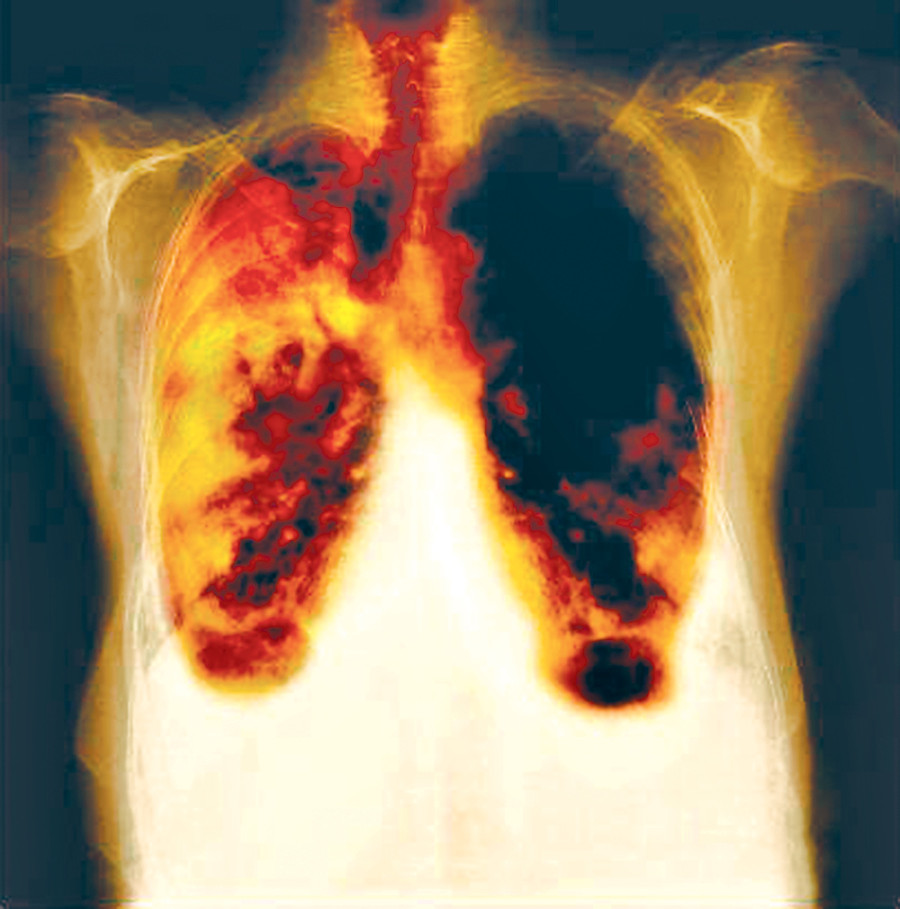Opinion
Overhead hazard
Asbestos used as roofing in houses and schools has become a growing cancer risk
Ram Charitra Sah
Asbestos is a mineral fibre that occurs in rock and soil. Although asbestos fibres are tiny in nature, they are extremely durable, resistant to heat, fire, chemical reactions, electricity and breakdowns. It has become the material of choice for roofing
shingles, floor tiles, ceiling materials, cement compounds, textile products and automotive parts. However, all forms of asbestos are carcinogenic. It has been increasingly imported, sold, distributed and used in Nepal, especially in the Tarai region which is home to 51 percent of the population. Asbestos used as roofing material in houses and schools has become a growing cancer risk in the Tarai.
The reason behind the growing use of asbestos in the Tarai is misleading advertising. People were told that asbestos is the best construction material, is easy to fix, provides warmth in the winter and remains cool in the summer. Asbestos is being freely imported, marketed, promoted and used in Nepal despite being legally banned since June 20, 2015. All types of asbestos cause lung cancer, mesothelioma, cancer of the larynx and ovary and asbestosis (fibrosis of the lungs). Exposure to asbestos occurs through inhalation of fibres in the air in the working environment, ambient air in the vicinity of point sources such as factories handling asbestos or indoor air in housing and buildings containing friable (crumbly) asbestos materials.
Currently, about 125 million people in the world are exposed to asbestos at the workplace. In 2004, asbestos-related lung cancer, mesothelioma and asbestosis from occupational exposures resulted in 107,000 deaths and 1,523,000 disability adjusted life years, according to the World Health Organisation. Asbestos is classified as a known human carcinogen. Asbestos fibres are microscopic and, therefore, are easily inhaled. Once inhaled, the fibres stick to the respiratory system, including the lining of the lungs and inner cavity tissue. As asbestos fibres are typically quite rigid, they become lodged in the soft internal tissue of the respiratory system, and are not easily expelled or broken down by the body. Over time, these fibres can accumulate and cause scarring and inflammation, which can affect breathing and lead to serious health problems.
Asbestos exposure can produce the following symptoms: Shortness of breath, wheezing, or hoarseness; a persistent cough that gets worse over time; blood (fluid) coughed up from the lungs; pain or tightening in the chest; difficulty swallowing; swelling of the neck or face; loss of appetite, weight loss; fatigue.
Today, about 60 countries across the globe including Nepal have banned the use of asbestos. No asbestos-specific national legislation has been enacted to protect people from asbestos exposure. However, our constitutional provisions regarding the right to health and the right to a clean and healthy environment, the ban on the import, purchase and use of asbestos and the occupational safety policy could be used as a safeguard policy to protect the people, workers and environment from asbestos.
A recent compliance monitoring conducted by the Centre for Public Health and Environmental Development in the 10 districts of the Central and Eastern Tarai revealed that there is no record of the formal import of asbestos with any of the customs offices. However, these carcinogenic materials are freely available, sold, distributed and used in most Tarai districts. This calls for urgent action towards effective implementation and monitoring by the government. It needs to effectively implement the government ban on the import, sale, distribution and use of asbestos.
Sah is Executive Director at Center for Public Health and Environmental Development




 18.12°C Kathmandu
18.12°C Kathmandu










